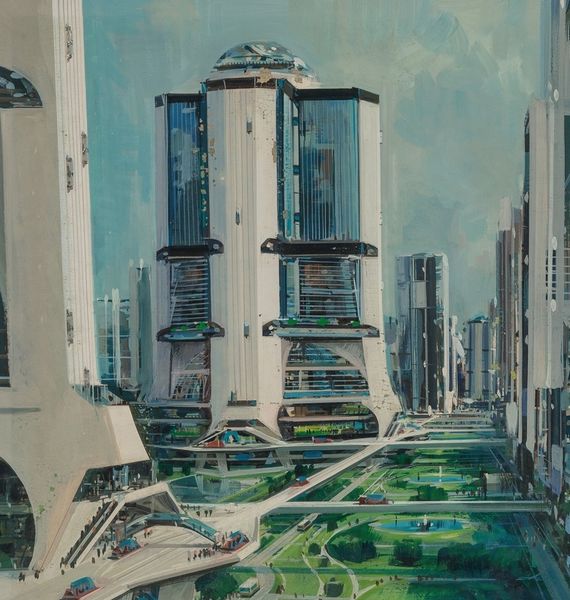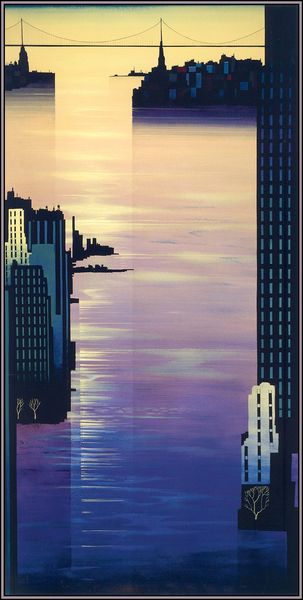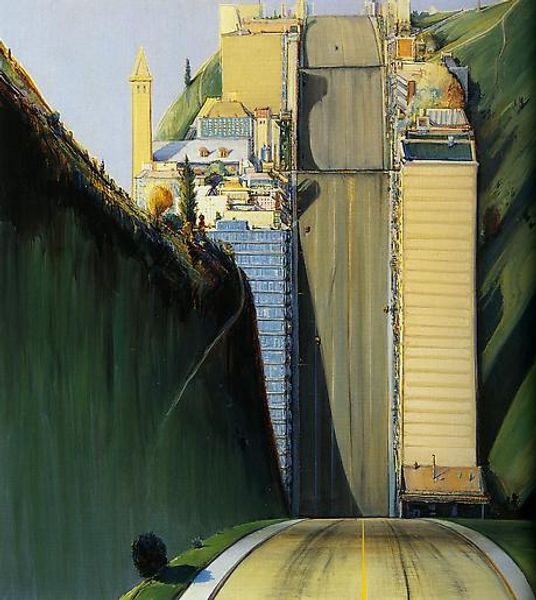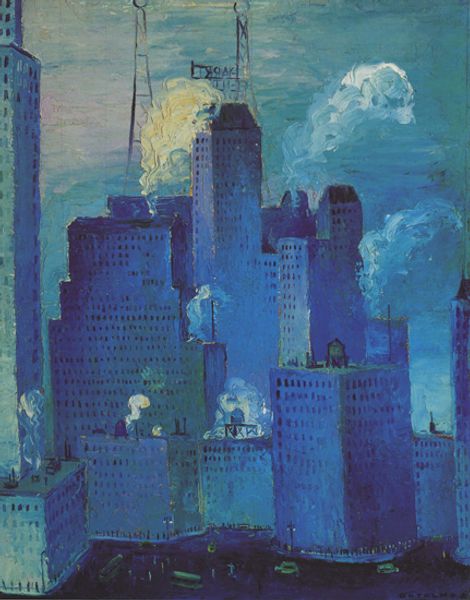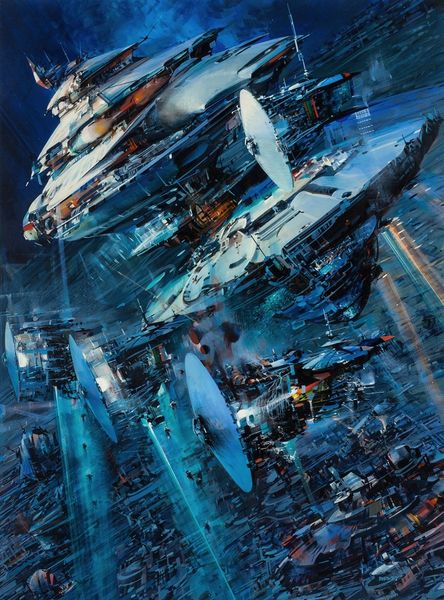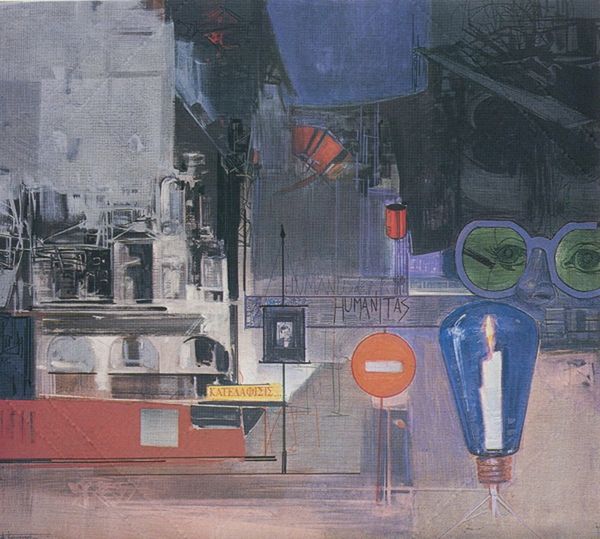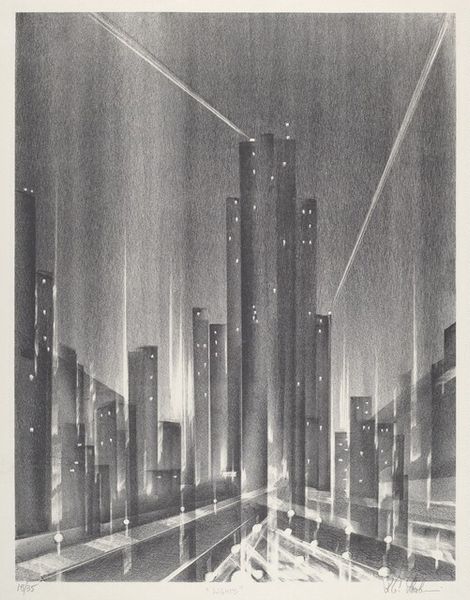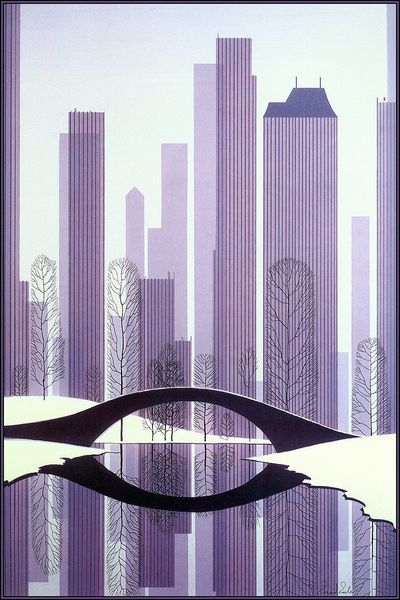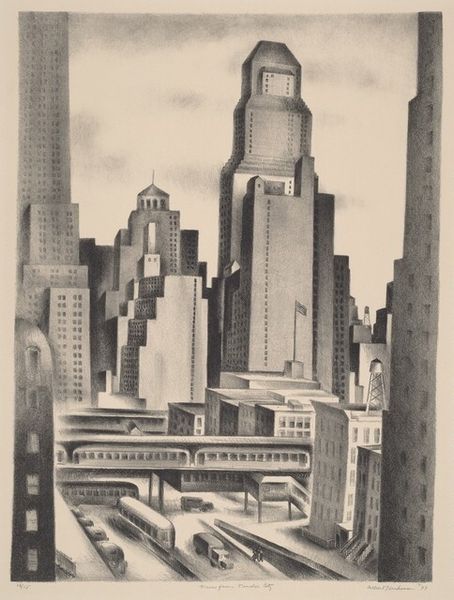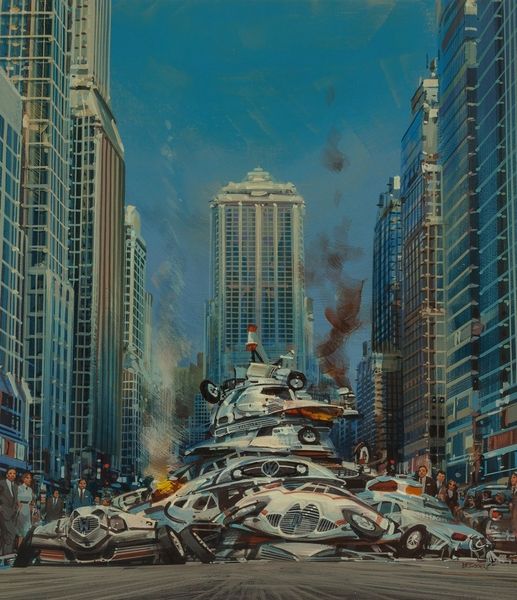
painting
#
painting
#
bay-area-figurative-movement
#
cityscape
#
modernism
#
realism
Dimensions: 121.9 x 91.8 cm
Copyright: Wayne Thiebaud,Fair Use
Curator: This is Wayne Thiebaud's "Hill Street (Day City)" from 1981, an oil painting that offers an almost vertiginous perspective of urban life. What are your initial thoughts? Editor: A slightly unsettling feeling. The extreme angles make the city feel like it's on the verge of toppling over. There is this disquieting visual tension. Curator: Precisely! Thiebaud’s compositions frequently toy with perspective, challenging our expectations of spatial representation. I see it as a reflection of the dizzying experience of urban existence, the sheer sensory overload. The repeating geometry suggests a deeper structure, almost a cultural DNA. Editor: That rings true. Thinking historically, the painting's distortion resonates with anxieties about modern urban planning of the time—the constant construction, demolition, the feeling of things being temporary and fragile. Curator: Consider the way Thiebaud renders the light—bright and almost unreal. This evokes a certain dreamlike quality, but also hints at the artifice of city life itself. It makes one consider idealized cities as constructed fantasies that attempt to contain the organic realities of complex cultures. Editor: Yes, I find it also relates to public space and how people interact with architecture and traffic, it seems both isolating and interconnected here. I think Thiebaud might have aimed to show how public design impacts people. Curator: A great observation. He gives us a unique and unsettling interpretation of an environment familiar to many, compelling us to reconsider the psychological impact of modern urban spaces. It feels familiar yet disorienting. Editor: Right. "Hill Street (Day City)" uses a modern style with elements of realism, I now understand the subtle underlying themes of urban spaces that reflect society’s structure and psychology. Curator: Ultimately, Thiebaud’s unusual use of perspective highlights the dynamic, constantly shifting nature of city life and its reflection of change in culture. Thank you for those interesting thoughts.
Comments
No comments
Be the first to comment and join the conversation on the ultimate creative platform.

